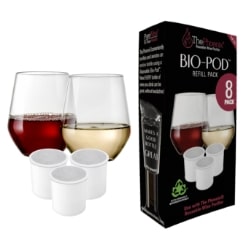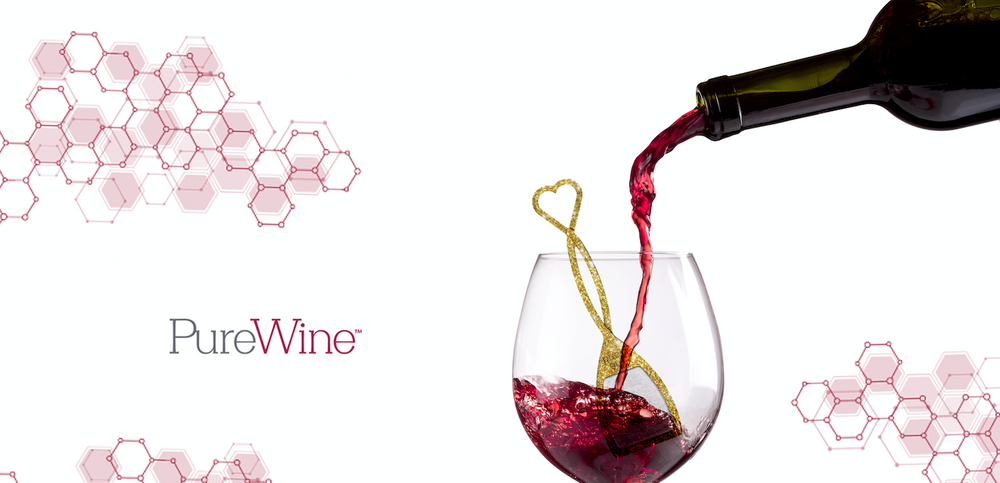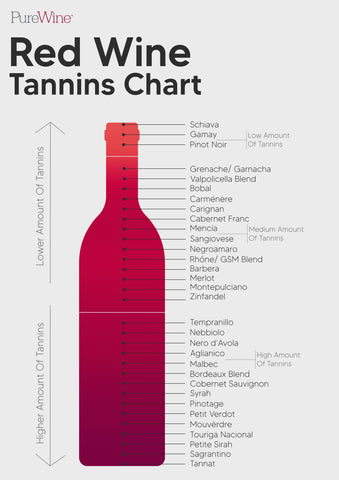Truth and Myths About Tannins in Wine
Never Ending Wine Myths #3 -
The Wine Myth:
“I’m allergic to the tannins in wine, so I switched to drinking beer or vodka.”
The Wine Truth:
Any fermented, non-distilled alcohol will likely contain a wide variety of tannins. The rule of thumb is, the darker the alcohol, the more tannins it contains.
Wine & Tannins
Wine is a complex beverage; it’s undoubtedly more than fermented grape juice. A lot is going on inside every bottle of wine; amongst all the compounds that make wine, the tannins in wine are one of the most interesting.
Tannins are not unique to the realm of wine; you’ll find them in tea, chocolate, nuts, seeds, legumes and most veggies. So, what’s the deal with these compounds? Let’s talk about tannins and discover their role in wine.
Are tannic wines good for you? Do tannins give you headaches? Here’s all you need to know about tannins, the truths and the myths.
What are Tannins in Wine?
Wine is fermented grape juice, but more often than not, the color, flavor, aroma and texture in the wine don’t come from the juice itself but the grapes’ skins. That’s right. Red wine is red because it leaches the pigments trapped in the grape skins. Color is not the only thing that gets infused in the juice soon-to-become wine; the grape skins and seeds also add tannins to the liquid.

Concisely, tannins are small plant compounds present in all plant matter. On the palate, tannins cause a drying sensation that can be pretty appealing but also overwhelming for inexperienced wine drinkers. Tannins provide body, texture and age-worthiness to wine. Although not necessarily a sign of high quality, some of the finest red wines in the world have relative high levels of tannins.
Adding Tannins to Wine. Why?
How do tannins find their way into wine? Well, as the grapes ripen, they develop tannins naturally, especially when exposed to intense sunlight. Red grapes have much more tannins than white grapes. Some white grapes have such low levels of tannins that you hardly ever notice them in your wine.
Some red grapes are more tannic than others. For example, Cabernet Sauvignon, Syrah, Nebbiolo and Tempranillo produce much more tannic wines than wines made with Merlot or Pinot Noir. By the way, tannins are not only present in the grapes’ skins but also in the seeds and stems, all of which usually end up in the fermentation tank.
Oak Barrels and Tannins

There’s another way for tannins to find their way into wine. Oak barrels. As you know, tannins exist in all plant matter, including wood, so when producers age the wine in barrels, the alcoholic liquid leaches out some of the tannins in the oak wood; how cool is that? Some producers add liquid tannins to their wines, but using additives like these is frowned upon in most wine circles.
Wine Boldness and Tannins
Tannins play a significant role in red wine. The more tannins in the wine, the better it is protected from oxidation, making it more age worthy. Tannins also change the wine’s robustness, mouthfeel and make wine feel bigger and bolder.
The tannins found in red wines will give them more versatility at the table. The higher the level of tannins, the richer and fattier the ideal food pairings. Tannins bind with fat and protein molecules, mainly in red meat, making your steak dinner much more enjoyable! On the other hand, tannic wines might be too robust for more delicate foods. For example, you probably will not want to pair these bold, muscular wines with the subtle flavors in white fish or mild salads.
Do White Wines have Tannins?
White grapes don’t contain as many tannins as red grapes, but there are some tannins in their skins. More often than not, we can safely say white wine has low levels of tannins, but you can be pleasantly surprised.
When white wines are aged in oak barrels, they can express some of the wood’s tannins that have been extracted into the wine. You’ll also get some tannins in white wine if producers macerate the white grape skins with the grape juice, like when making orange wine. However, you don’t have to deal with tannins with white wine in most cases. In a nutshell, white wine can have tannins, but they’re typically not detectable.
Low Tannin Red Wines
If you’re looking for a bottle of red wine for white meat, poultry or oily fish, such as salmon and tuna, then low tannin red wine is for you. Here are some of the most popular red grapes with low tannin levels.
Merlot - This French grape from Bordeaux is the second most planted in the world, and it is well known for its juice black and blue fruit aromas and round, gentle tannins.
Pinot Noir Tannin Level - The king of Burgundy’s vineyards, Pinot Noir, is a noble varietal with powdery, sometimes non-existing tannins along with ripe cherry aromas and hints of undergrowth.
Zinfandel - The All-American variety produces big, bold wines with high alcohol and hints of residual sugar, but in the tannin department, Zinfandel is quite soft. This is a gentle giant.
Barbera - This Italian variety is not dissimilar to Merlot. It also has mild, round tannins but offers a more vibrant acidic backbone. This is the perfect wine grape for tomato sauces.
Gamay - Pinot Noir’s youngest offspring, Gamay, is commonly found in the French region of Beaujolais. Gamay produces fruity, easy-to-drink wines with a youthful character and unnoticeable tannins.
High Tannin Wines
If it’s a robust and structured wine you’re looking for, then you’ll need wine made with grapes with elevated tannins. These are best paired with hearty stews, red meat, roasts, barbecue and other meaty treats.
Cabernet Sauvignon. The most planted red grape on the planet is also amongst the most tannic; therefore, the wines made with it are age-worthy and concentrated.
Tannat. Uruguay’s flagship varietal is incredibly tannic; this one can be overwhelming, but it’s also fantastic with char-grilled steaks and smoked meat.
Syrah. This French varietal from the Rhône Valley is known for its rustic character, rugged tannins and aromas reminiscent of red berries, black pepper and cooking herbs with hints of leather.
Nebbiolo. The most renowned grape in Piedmont, Italy. This is the grape behind the famous wine of Barolo and Barbaresco, which can display a thick layer of chewy tannins.
Tempranillo. Spain’s most important grape can produce young, fruity wines, but also contemplative masterpieces that can age for decades. Tempranillo has many tannins, especially when aged for several years in oak casks.
Wine Without Tannins
So, can you find and wines without tannins? Do they exist? For red wines, almost all have at least some tannins. Still, young, fruity wines normally have fewer tannins than concentrated wines built to stand the test of time.
Can you remove tannins from wine without having a dramatic impact on the wine quality? Typically, when significant levels of tannins are removed during wine production, the mouth feel, taste and overall quality are degraded. Tannins can be removed from wine using high pressure filtration or precipitation with egg whites or other fining agents. Tannins will also precipitate to the bottom of the bottle during prolonged storage. The most tannic wines might even need a few decades sitting in a dark cellar to round up all those tannins!
Should You Remove Tannins From Wine?
Should you remove tannins from wine? Tannins are vital to wine production and have been falsely linked to headaches or hangovers. There’s no reason to try to remove tannins from wine. If you don’t enjoy having those gritty tannin particles in the bottom of your glass, you can always enjoy white wine or a low tannin red wine.
Do Tannins Cause Wine Headaches?
Tannins have not been directly linked to triggering wine headaches. In fact, tannins are plant polyphenols that have been scientifically proven to be quite good for you. For example, they function as antioxidants that keep scavenging free radicals in your bloodstream at bay. Tannins can also lower cholesterol levels and reduce blood pressure! There’s a lot we still don’t know about the health benefits of tannins, but the results look promising, and none have to do with headaches.
Tannins Don't Give You a Headache.
What gives you that wine headache after just a glass or two are the histamines and sulfites found in all types of wine. Histamines that are formed during the normal fermentation processes are especially prone to causing side effects like headaches, skin flushing, nasal stuffiness and GI distress. The grapes listed above that are high in tannins, e.g., Syrah and Cabernet Sauvignon, are also especially high in histamines. Tannins are your friends. Whether you enjoy them in your wine or not, they never mean you harm.
Don’t Fear Wine Tannins, Embrace Them!
Tannins are interesting molecules; they make wine consumption so much more enjoyable and exciting! And we can also thank tannins for those bottles of red wine that can still be enjoyed after a few decades. Without tannins, wine would just be too mild to pair well with a steak dinner.
If you often get headaches or other side effects after drinking red, white wines and champagnes, you may be sensitive to the sulfite preservatives that can be especially high in these wines. PureWine products are a fast, effective way of removing sulfites from your wine. We are here to help you enjoy all your favorite wines…free of side effects.

 (20 reviews)
(20 reviews)



















